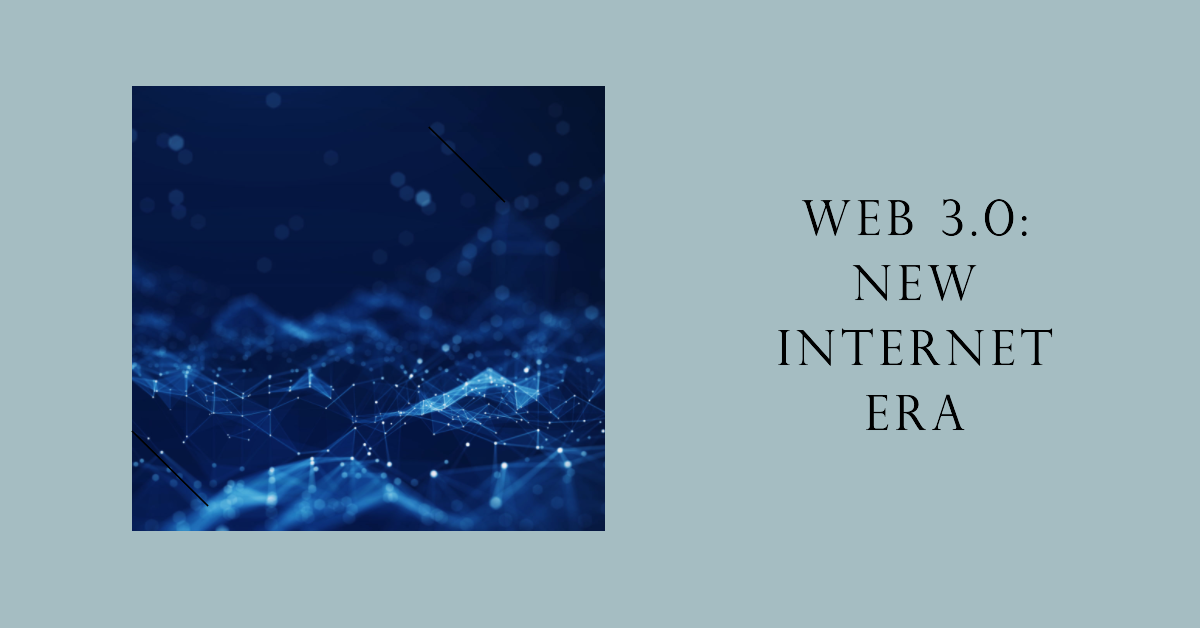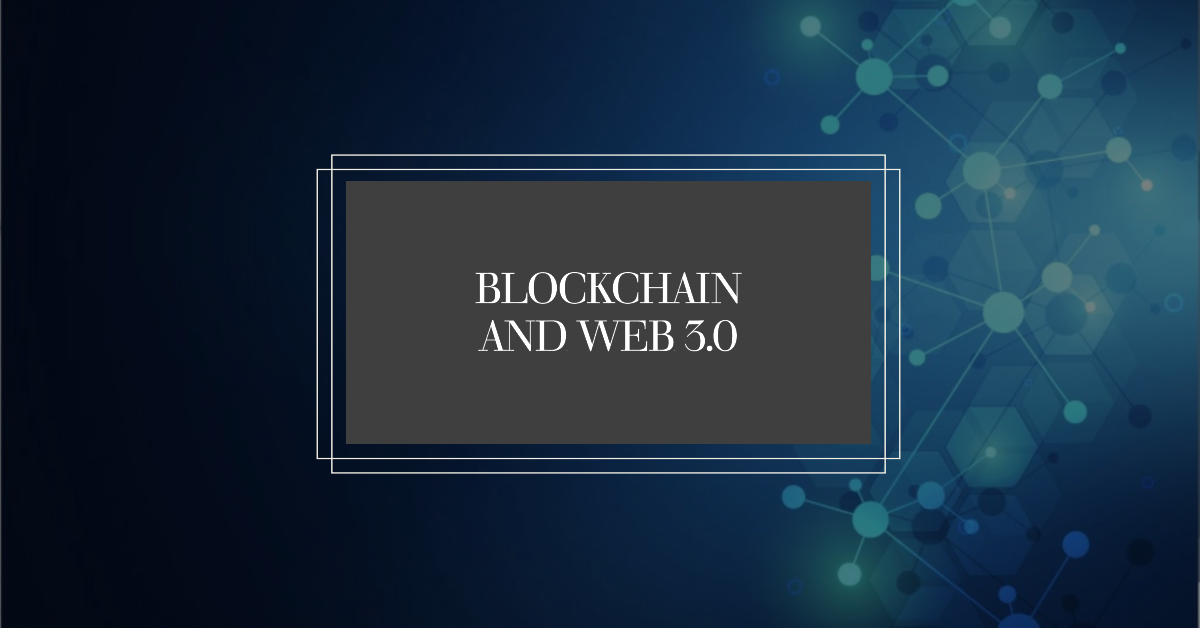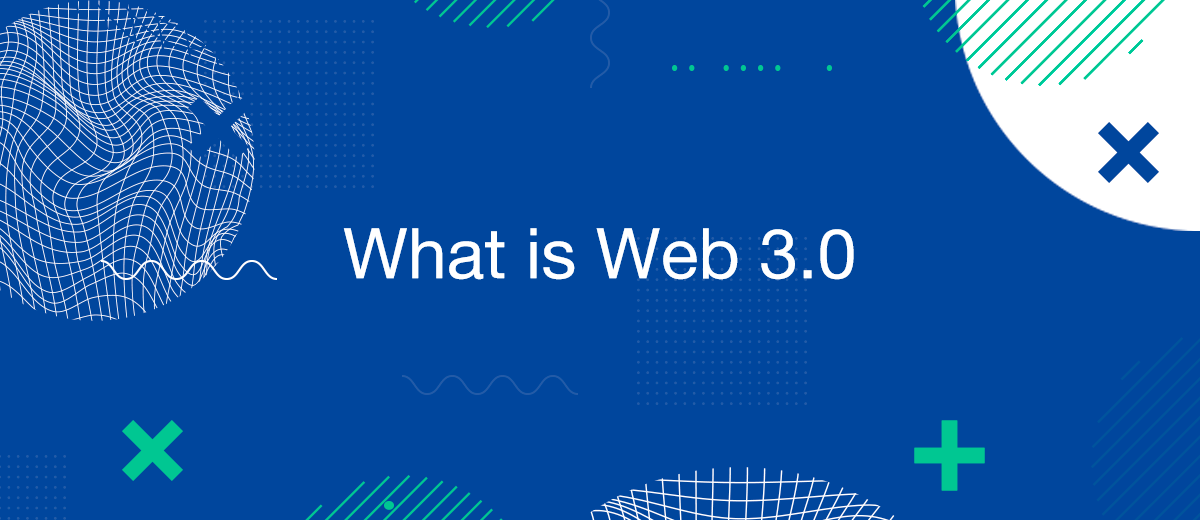The digital revolution of the past few decades has changed our world in profound ways, and now we stand at the dawn of a new era: Web 3.0. As we transition from the social, collaborative structure of Web 2.0, the Web 3.0 era promises a more semantic, interactive, and personalized online experience. This article aims to delve into the concept, the technical nuances, the potential benefits and challenges, and the prospective future of Web 3.0. As we explore this emerging technology, we will grasp how it's poised to change our interaction with the internet, offering new avenues for businesses, individuals, and society at large.
What is Web 3.0
The digital landscape stands on the cusp of yet another transformation, leading us towards the realm of Web 3.0. This impending revolution isn't merely a tech upgrade, but a paradigm shift in how we interact with the internet. The new era promises a semantic, interactive, and personalized user experience, breaking away from traditional passive information consumption. As we embark on this exploration, we'll navigate the complexities of Web 3.0 and uncover how it's set to reshape our digital world. The journey ahead is exciting and packed with potential.
Defining Web 3.0
Briefly, the web 3.0 definition is as follows: the third iteration of the internet ecosystem. This technologically advanced version transcends the boundaries of its predecessors, offering a more immersive, interactive, and intelligent environment. Known as the 'semantic web', Web 3.0 introduces the concept of data having its own meaning. The goal is to create a web that's understandable by computers, enabling them to provide richer, context-driven search results, and facilitating users' navigation through the digital landscape.
Unlike the static, read-only era of Web 1.0, or the social, read-write era of Web 2.0, Web 3.0 is read-write-execute. If we compare Web 2.0 vs Web 3.0, the new iteration significantly improves the quality of user interaction with the internet. It empowers users with personalized content and intuitive interactions. Interoperability, privacy, and decentralization form its backbone, propelling us towards a more user-centric, privacy-protective online experience. The ability to execute tasks and the automation of processes in a decentralized web are some of its game-changing features.
This emerging paradigm is set to revolutionize the internet as we know it. By enhancing the capacity for meaningful interactions between humans and the digital world, Web 3.0 has the potential to redefine our online experience completely.
The evolution of the internet
The internet's journey has been a vibrant evolution from simple beginnings to its current complex form. Here's a brief overview:
- Web 1.0. The inception of the internet, often called the 'read-only' web, was characterized by static HTML web pages. This phase was primarily about information dissemination, with little to no user interaction or content generation capability.
- Web 2.0. This 'read-write' era marked a significant shift, introducing interactive elements, social networking, and user-generated content. The power to create and share became a fundamental aspect, turning passive readers into active participants.
- Web 3.0. Now, we stand on the threshold of the 'read-write-execute' era. This phase brings about a more semantic, personalized, and intelligent internet experience. Web 3.0 examples include artificial intelligence, decentralized networks, and blockchain technology. They are set to deliver a more intuitive, immersive, and secure online world.
The evolution from Web 1.0 to Web 3.0 highlights a journey from simple information provision to dynamic user interaction, and now towards an intelligent and decentralized user experience. As we delve deeper into the realm of Web 3.0, we embrace a new epoch of digital engagement.
Technical Aspects of Web 3.0

Web 3.0 technologies represent a new frontier in the digital world, where artificial intelligence, advanced algorithms, and distributed networks play pivotal roles. One of its key traits is its ability to interpret data
contextually and adapt to user behavior over time, offering personalized,
intelligent results.
Another hallmark of Web 3.0 is its decentralization, made possible by blockchain technology. This framework empowers users with more control over their data, providing a more secure, transparent, and fair digital ecosystem.
Moreover, the implementation of machine learning and natural language processing enhances the user experience, making digital interactions smoother and more intuitive. Web 3.0, with its intelligent, decentralized architecture, is set to redefine our digital world, giving rise to more secure, efficient, and personalized online experiences.
The semantic web: making the internet understandable
The semantic web, a fundamental aspect of Web 3.0, refers to the enhancement of the World Wide Web with semantic content. It aims to convert the current web, dominated by unstructured and semi-structured documents, into a "web of data". This shift allows data to be shared and reused across applications, enterprises, and communities.
In this scenario, web content is given well-defined meaning, enabling computers and people to work in cooperation. The semantic web provides a common framework that facilitates data sharing and reuse, empowering computers to understand and respond to complex human requests based on their meaning.
A significant tool in this effort is the Resource Description Framework (RDF), used to describe information about resources on the web. RDF provides a way to describe relationships between things, like a website and its creator, a blog post and its comments, or even more abstract concepts like a person and their social connections.
The Semantic Web's vision is to create a universal medium for data exchange where data can be easily interpreted by machines, fostering a new level of user interaction and knowledge creation. By making the internet understandable, the semantic web is poised to revolutionize our online experience, making it more intelligent, relevant, and personalized.
Interoperability and open-source technology
The key Web 3.0 features are interoperability and open-source technology. Interoperability refers to the capacity of different systems and applications to work together, exchanging information and mutually utilizing it. It ensures a seamless experience for users who interact with multiple web services or digital platforms, thus breaking down data silos.
Open-source technology, on the other hand, represents the concept of freely accessible, distributable, and modifiable software. It enables innovation at an accelerated pace by allowing developers to learn from each other, build upon existing works, and collaborate on projects. This collaborative framework fuels the creation of robust, secure, and high-quality software.
Together, these two components significantly enhance the web's versatility and inclusivity. Interoperability bridges the gaps between diverse systems and platforms, while open-source technology fosters a collaborative environment that accelerates innovation. The result is an interconnected, flexible web environment that thrives on shared knowledge and cooperation, marking a significant shift from the fragmented and proprietary tendencies of the past. This transformation paves the way for a more unified, accessible, and innovative Web 3.0.
Benefits of Web 3.0
The anticipated Web 3.0, the next generation of the internet, brings with it an array of promising benefits:
- Data ownership. Web 3.0 aims to return data control to users, a significant departure from the Web 2.0 model where large corporations typically manage data. Users will have more control over their personal information, improving privacy and data security.
- Personalized experiences. Advanced algorithms and AI in Web 3.0 provide highly tailored user experiences. It offers context-driven results by understanding user preferences and behaviors, to enhance online interactions.
- Decentralization. By harnessing the power of blockchain and distributed ledger technology, Web 3.0 promotes decentralization. It aids in reducing dependency on centralized entities, leading to a more transparent, equitable, and resilient internet infrastructure.
- Semantic web. The emphasis on a semantic web means data has context and meaning, making interactions with the internet more effective and efficient. The use of metadata and other markers helps machines understand and fulfill complex user requests.
- Interoperability. Web 3.0 encourages systems and applications to work harmoniously. It promotes the seamless flow of information across platforms, enhancing the user experience and fostering the integration of diverse internet services.
- Open-source innovation. By championing open-source principles, Web 3.0 fuels collaborative innovation. This approach encourages a shared learning environment, accelerates technological advancements, and delivers high-quality, robust software solutions.
The transition to Web 3.0 represents a giant leap forward in the digital realm, promising an internet landscape that's more user-centric, secure, efficient, and intelligent. This evolution harbors immense potential for transforming our digital interactions and the overall internet experience.
Privacy Concerns in Web 3.0
As we transition to Web 3.0, privacy concerns continue to be a pressing issue. While the promise of user data ownership and control is appealing, the practical application of such a concept presents a range of challenges.
- Automate the work with leads from the Facebook advertising account
- Empower with integrations and instant transfer of leads
- Don't spend money on developers or integrators
- Save time by automating routine tasks
One of these challenges is ensuring users have the necessary knowledge and tools to manage their own data effectively and securely. Not everyone may be equipped or willing to handle the responsibilities that come with increased data control, potentially leading to misuse or mismanagement.
Additionally, as Web 3.0 leverages AI and machine learning for personalized experiences, it inherently involves processing vast amounts of personal data. Striking a balance between personalization and privacy protection becomes a complex task. While these technologies can enhance the user experience, they also carry the risk of intrusive data practices if not appropriately managed.
Finally, the integration of blockchain technology, while offering transparency and decentralization, may inadvertently expose sensitive data. Transactions on a public blockchain are transparent, which might pose privacy issues in certain circumstances.
Addressing these privacy concerns is crucial to fostering a secure and user-centric Web 3.0 environment. It requires careful planning, robust technologies, and effective policies to achieve an ideal balance between enhanced user experiences and privacy protection.
Potential Implementation Challenges of Web 3.0
Moving towards Web 3.0 presents a range of potential implementation challenges:
- Technological complexity. Web 3.0 involves advanced technologies like AI, blockchain, and machine learning. This complexity may create obstacles for organizations without sufficient technical expertise or resources.
- Infrastructure overhaul. Shifting from existing infrastructures to new systems accommodating Web 3.0 technologies could be expensive, time-consuming, and disruptive for organizations.
- User education. With users expected to manage their own data, there is a need for comprehensive education about digital responsibility and data security practices.
- Regulatory hurdles. Web 3.0 involves global data exchange and decentralization, potentially complicating compliance with local data protection and privacy laws.
- Interoperability. Ensuring diverse systems, services, and technologies work seamlessly together can be technically challenging.
- Data security. Protecting large volumes of data against potential breaches in a decentralized framework might present substantial security challenges.
Navigating these implementation challenges will be key in the successful transition to a Web 3.0 environment. Despite the complexities, the potential benefits of a more intelligent, user-centric, and interconnected web make the pursuit worthwhile.
The Future of the Internet with Web 3.0
The future of Web 3.0 is set to revolutionize our interaction with the digital world. As we move towards an increasingly interconnected, smart, and user-centric web, we can expect a transformative impact on various aspects of society.
The evolution towards a semantic web will make the internet more intuitive and efficient, delivering more personalized and context-driven experiences. Additionally, the adoption of open-source principles and the emphasis on interoperability will fuel a collaborative, innovative, and versatile digital environment.
On the privacy front, the aim to give users more control over their data will redefine the balance between personalization and privacy protection. Despite the challenges, the future of Web 3.0 holds the promise of an internet that is more adaptable, intelligent, and user-driven than ever before.
Blockchain and Web 3.0: a potential synergy

Blockchain
technology and Web 3.0 are often discussed in tandem due to their potential for
powerful synergy. Both advocate for decentralization, transparency, and
user-centric design – values that can radically reshape our digital interactions.
Blockchain's fundamental principles align seamlessly with Web 3.0's vision. Its distributed ledger system promotes transparency and reduces reliance on centralized entities, contributing to a fairer digital ecosystem. Additionally, its inherent security features can address some of the privacy and data protection concerns prevalent in the current web architecture.
Furthermore, blockchain's ability to facilitate peer-to-peer transactions without intermediaries can help actualize Web 3.0's goal of democratizing data ownership. It provides a mechanism for users to control their data and engage in direct transactions, reinforcing user autonomy.
Integrating blockchain technology into Web 3.0 also opens up possibilities for new forms of digital interactions, such as smart contracts and decentralized applications (DApps). These innovations can further enhance the versatility, security, and intelligence of the internet, solidifying the potential synergy between blockchain and Web 3.0.
The impact of Web 3.0 on businesses and individuals
The emergence of the third iteration of the internet ecosystem will have major implications for businesses and individuals alike. Let's look at Web 3.0 trends for both categories.
Businesses:
- Data-driven decisions. As the Internet becomes more intelligent, businesses can leverage rich, context-specific data for more informed decision-making.
- Customer relationships. Web 3.0's personalized approach allows for deeper understanding and engagement with customers, fostering stronger relationships.
- Operational efficiency. Improved interoperability and open-source technologies can streamline processes and enhance innovation.
Individuals:
- Data ownership. Web 3.0 empowers users with greater control over their personal data, redefining digital ownership norms.
- Personalized experiences. With semantic technologies, individuals can enjoy more personalized, intuitive, and efficient online experiences.
- Digital literacy. As users take on more responsibilities for their data, the necessity for improved digital literacy grows, potentially leading to a more knowledgeable and secure online community.
By redefining the way we interact with the digital world, Web 3.0 holds the potential to bring about considerable transformation in both the business and personal spheres.
Conclusion
Web 3.0 heralds a new era in the world of the Internet, characterized by intelligent systems, user empowerment, and a semantic structure that ensures more intuitive interaction. While this transition presents challenges, such as privacy concerns and implementation hurdles, the potential benefits are substantial. Enhanced user experiences, data democratization, and more innovative business models promise to redefine our digital landscape. As we venture into this promising future, it is crucial to navigate the transformation effectively, considering both the potential advantages and challenges. Ultimately, the dawn of Web 3.0 signifies an exciting journey towards an intelligent, user-centric, and decentralized Internet.
If you use Facebook Lead Ads, then you should know what it means to regularly download CSV files and transfer data to various support services. How many times a day do you check for new leads in your ad account? How often do you transfer data to a CRM system, task manager, email service or Google Sheets? Try using the SaveMyLeads online connector. This is a no-code tool with which anyone can set up integrations for Facebook. Spend just a few minutes and you will receive real-time notifications in the messenger about new leads. Another 5-10 minutes of work in SML, and the data from the FB advertising account will be automatically transferred to the CRM system or Email service. The SaveMyLeads system will do the routine work for you, and you will surely like it.

